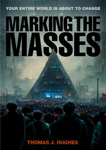The Future of Time Management: Embrace Time Card Apps
 By
By
Remember when you had to physically punch a time card at work? How quaint. Now, you're standing at the dawn of a new age in time management.
The future is digital, and it's time you embraced time card apps. Imagine being able to track your work hours with just a few taps on your smartphone. But wait, there's more to these apps than just convenience.
What if I told you that the time card app can also help you increase productivity, streamline workflow, and boost your bottom line? Intrigued? Well, buckle up because we're just getting started.
Key Takeaways
•
Time card apps revolutionize time management by
tracking work hours, aiding in task prioritization, and enhancing efficiency.
•
Selecting the right time card app involves
considering factors like usability, device compatibility, and
cost-effectiveness.
•
Effective implementation of time card apps
requires consistency, understanding of its benefits, and regular review of time
logs.
•
Integrating time card apps can significantly
boost productivity and efficiency, paving the way for improved time management
practices.
Let's
dive right in to understand what time card apps are and how they can
revolutionize the way you manage your time.
Think
of time card apps as your personal timekeeping assistant. They're digital tools
designed to track, manage, and organize your work hours. These apps are often
used by freelancers, remote workers, or any professionals who want to optimize
their productivity.
Imagine
this: you're juggling various tasks, and you're unsure where all your time is
going. A time card app can step in to help you out. By logging your hours, you
can see where you're spending most of your time and where you're losing it.
It's like having a personal accountant for your hours, making sure every minute
counts.
Moreover,
they're not just for individuals. Businesses can use them to monitor employee
hours, track project progress, and ensure everyone's on the same page. This can
lead to increased productivity, efficient workflows, and a happier, more
balanced work environment.
In
essence, time card apps are more than just trackers; they're a game-changer in
how you manage your time. So, are you ready to take control of your time with
these apps?
While
technology has significantly transformed various aspects of our lives, it's
worth paying close attention to how it's revolutionized time management. Thanks
to technological advancements, time management has evolved from primitive
sundials to digital time tracking tools.
In
the past, people used sundials and mechanical timepieces to keep track of time.
Then came paper-based systems, like punch cards, which had their own share of
problems such as inefficiency and manipulation. But, as you've evolved into a
more tech-savvy individual, so has time management. It's now digital,
efficient, and more accurate.
The
advent of digital calendars and digital reminders on our smartphones and
computers has made it easy to schedule and manage tasks. Timekeeping software
has eliminated the need for manual entries, reducing errors and increasing
efficiency. Time card apps, the latest in this evolution, allow you to track, manage,
and optimize your time with just a few taps on your smartphone.
Harnessing
the power of time card apps can significantly streamline your daily tasks and
enhance your productivity. These apps are designed with your needs in mind,
offering you the ability to track and manage your time with unprecedented ease
and precision.
One
of the main benefits of using time card apps is the convenience they offer. You
can say goodbye to traditional time cards and the hassle of manual tracking.
With these apps, you're empowered to track your time with just a few taps on
your smartphone, anytime, anywhere.
Moreover,
these apps foster accountability. They record the exact time spent on your
tasks, which gives you a clear picture of how you're allocating your time. This
transparency can help you pinpoint where you're wasting time and where you
could be more efficient.
Additionally,
time card apps often come with extra features such as project management tools,
reminders, and reports. These features can further enhance your productivity by
helping you prioritize your tasks, stay on schedule, and monitor your progress.
In
a nutshell, time card apps aren't just time trackers, they're your personal
productivity helpers, paving the way towards a more organized, efficient, and
productive you.
Now
that you understand the benefits of using time card apps, it's time to guide
you on how to select the right one that fits your needs. The market is filled
with numerous time card apps, each with unique features and capabilities. Here
are some key factors to consider when picking the best one for you:
•
Ease of Use: The best app should have an
intuitive interface that's easy to navigate. You don't need an app that'll take
ages to understand how it works.
•
Compatibility: The app should be
compatible with your device or operating system. This ensures smooth operation
without glitches.
•
Cost: Does the app offer a free version
or trial period? What's the cost of the premium version? It's important to
consider an app that offers value for your money.
Once
you've chosen the right time card app, it's crucial to implement it effectively
in your daily routine to reap its full benefits. The key is consistency. Make
it a part of your routine to log in and out of the app at specific times of the
day. This discipline will help you keep track of your time and manage it
effectively.
In
addition, you'll want to make sure that your team is on board with using the
app. Show them how it works and explain the benefits. If they understand why
it's important, they're more likely to use it properly.
Remember,
it's not just about clocking in and out. Use the app's tools to organize your
tasks and avoid distractions. Set reminders for important tasks and deadlines.
Prioritize your work and break it down into manageable tasks.
Lastly,
don't forget to review your time logs regularly. This is where you'll see the
benefits of your efforts. You'll be able to identify patterns, spot
inefficiencies, and make necessary adjustments.
With
a little patience and dedication, you'll find that a time card app can
transform your productivity and time management skills. Embrace the future of
time management today.
To
truly understand the impact of time card apps, let's look at some success
stories where their use has dramatically improved time management and
productivity.
First,
consider the case of a small marketing agency. They switched to a time card app
and quickly saw an increase in productivity. They were able to accurately track
work hours and project times, leading to more efficient workflow and improved
client billing.
Next,
let's take a look at a construction company. Their mobile workforce had always
struggled with time tracking. However, after implementing a time card app, they
could better manage their time, significantly reducing overtime costs.
Finally,
an eCommerce store used a time card app to streamline its remote workers'
schedules. The app's ability to integrate with other software resulted in a
smooth workflow and reduced administrative tasks.
These
case studies demonstrate the effectiveness of time card apps. They're not just
about time tracking; they're about enhancing productivity, reducing costs, and
improving workflows. So, it's time you considered implementing one in your
business.
So, you're ready
to revolutionize your time management? Embrace time card apps.
They're an
evolutionary leap in how we manage our hours. They offer numerous benefits, but
remember, not all are created equal. Choose wisely, implement effectively, and
you'll see the difference.
Need proof? Just
look at the successful case studies. It's high time to explore this frontier of
productivity. It's not just about managing time, it's about maximizing it.Understanding Time Card Apps
The Evolution of Time Management
Benefits of Using Time Card Apps
Selecting the Right Time Card App
Implementing Time Card Apps
Effectively
Case Studies: Time Card Apps
Successes
Conclusion




